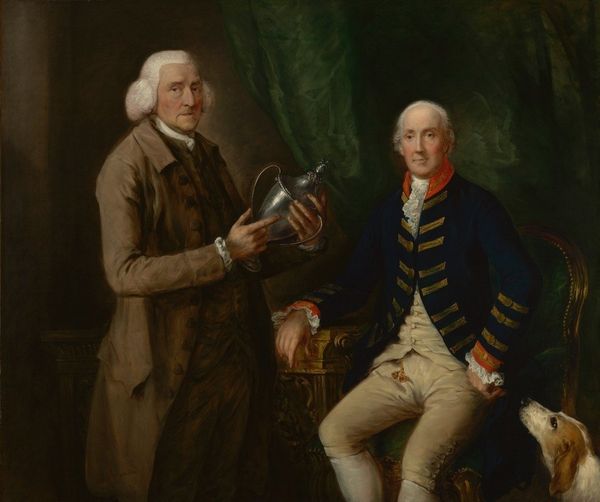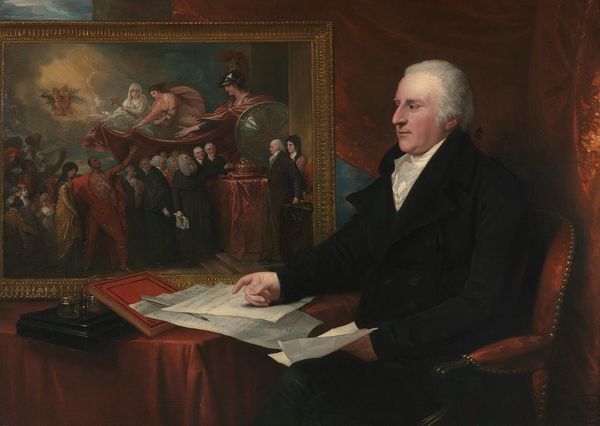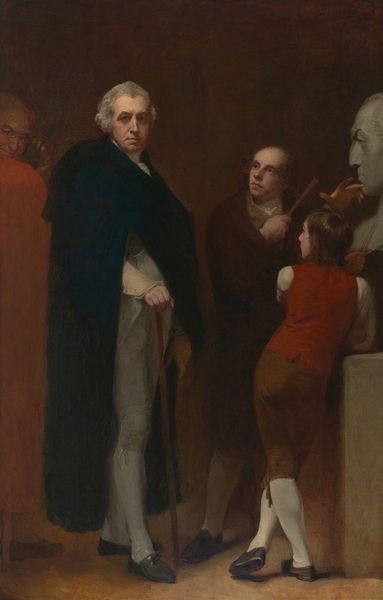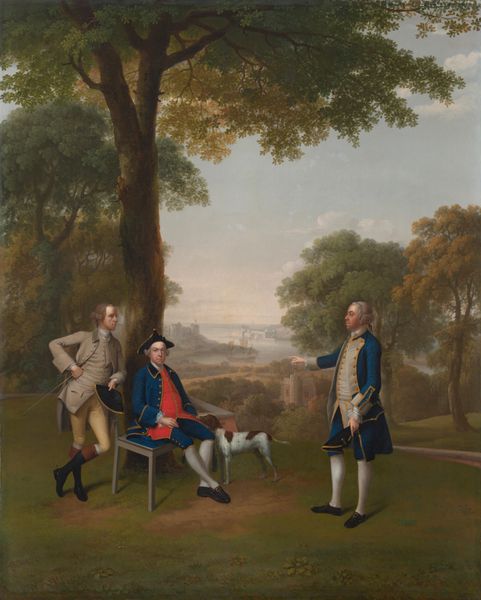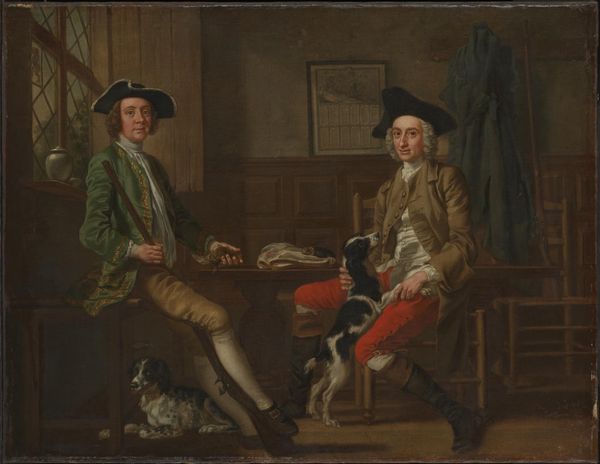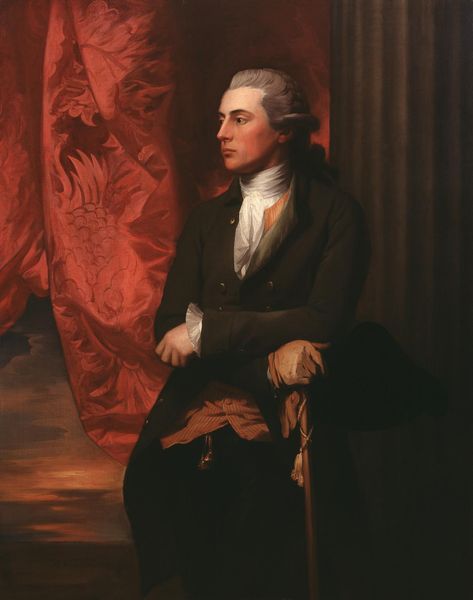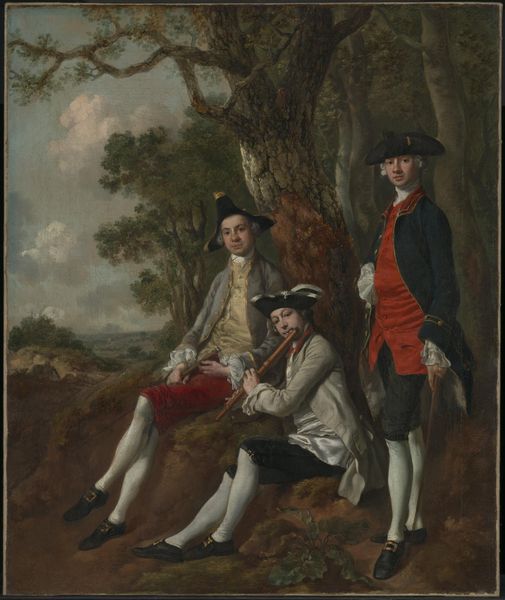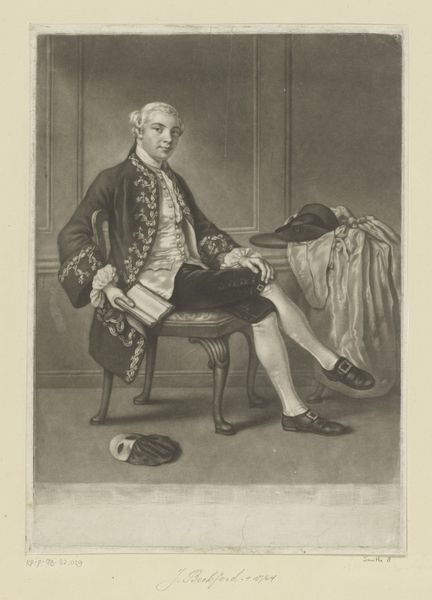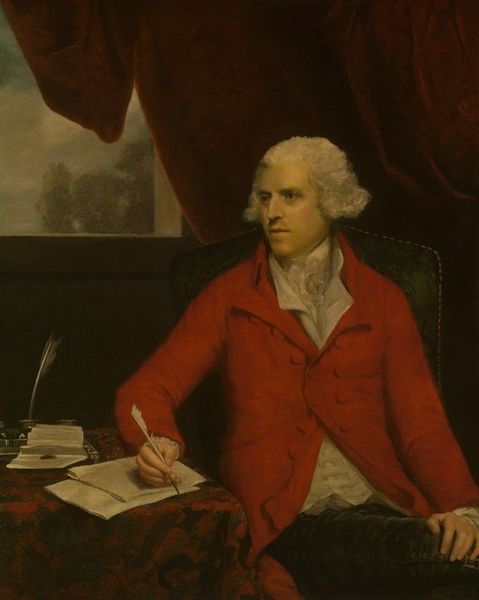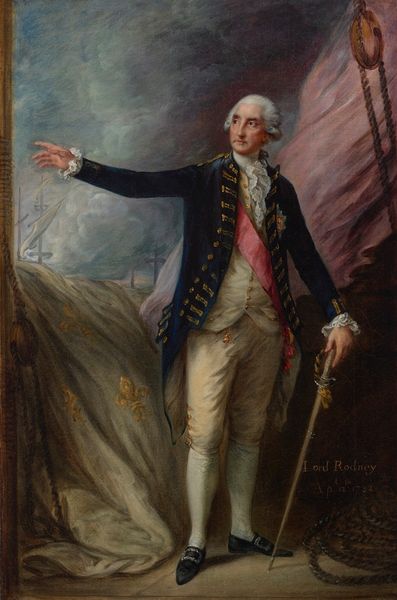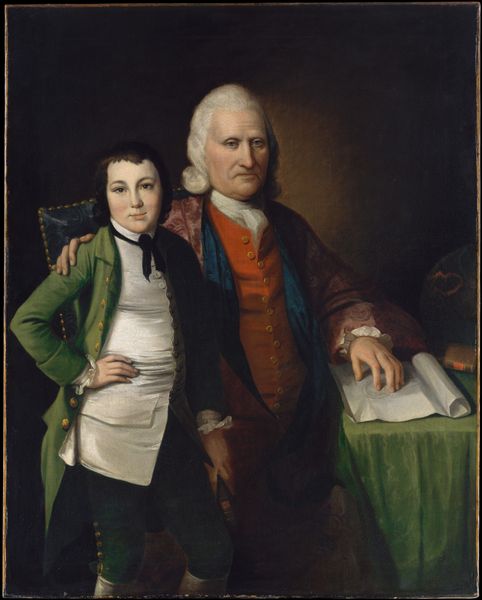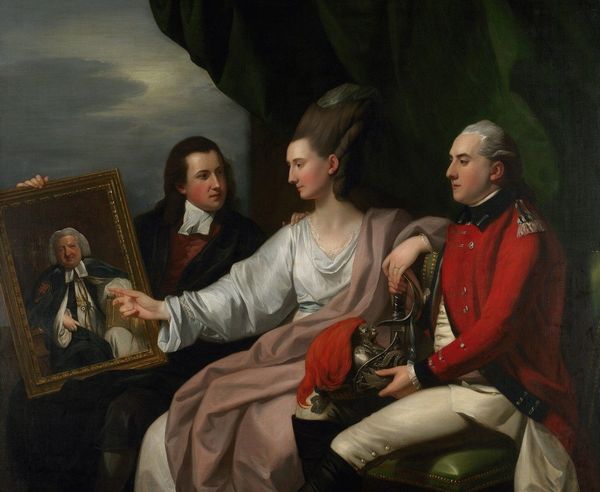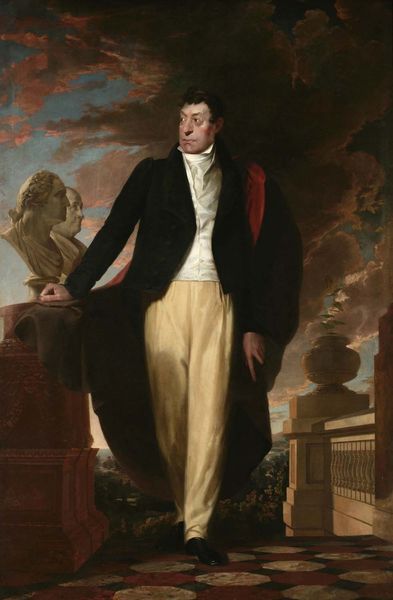
Dimensions: support: 762 x 635 mm frame: 889 x 760 x 60 mm
Copyright: CC-BY-NC-ND 4.0 DEED, Photo: Tate
Editor: Here we have John Downman’s "Sir Ralph Abercromby (?) and Companion," a painting of indeterminate date. It's striking how the red coat pops against the muted background. What do you make of the power dynamics at play here? Curator: It's a fascinating snapshot of British society, isn't it? Consider the colonial context: Abercromby was a key figure in expanding British power, often through violent means. Who does the painting leave out of the frame and out of the narrative? Editor: The colonial subjects, of course. The map in the background hints at these external power dynamics, but it is easy to overlook. Curator: Exactly. And the "companion," relegated to the background, becomes a stand-in for the marginalized. Downman subtly reveals the inequalities inherent in the British Empire. What could this reveal about the artist's intentions? Editor: Perhaps a quiet commentary on the social structures of the time. Thank you, I never would have considered that. Curator: My pleasure. It's about seeing beyond the surface, isn’t it?
Comments
tatebritain 8 months ago
⋮
http://www.tate.org.uk/art/artworks/downman-sir-ralph-abercromby-and-companion-n03316
Join the conversation
Join millions of artists and users on Artera today and experience the ultimate creative platform.
tatebritain 8 months ago
⋮
It is likely that the military man in this double portrait is either Sir Ralph Abercromby or General Edward Mathew. He examines a map of St George in Grenada, an island in the Caribbean to which both men had ties. Abercromby led the attack that suppressed Fédon’s Rebellion, an uprising against British colonial rule in Grenada in 1795–6. Mathew was colonial governor of Grenada from 1784 to 1789. John Downman’s portrait implicitly celebrates British military strength in the Caribbean despite the violence underpinning it. Gallery label, May 2023

